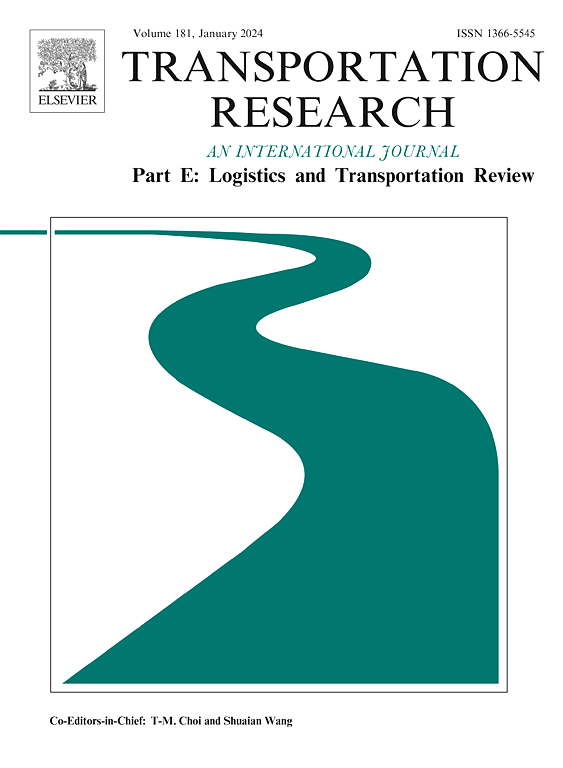Are electric vehicles greener than hybrid electric vehicles in carsharing? Insights from large-scale multi-objective simulation-optimization
IF 8.3
1区 工程技术
Q1 ECONOMICS
Transportation Research Part E-Logistics and Transportation Review
Pub Date : 2025-04-05
DOI:10.1016/j.tre.2025.104098
引用次数: 0
Abstract
Hybrid electric vehicles (HEVs) are perceived as transitional products bridging the gap between fueled vehicles and electric vehicles (EVs) because people intuitively believe that EVs are more environmentally friendly than HEVs. But is this perception true in the context of carsharing services (CSSs)? This paper pioneers a general large-scale multi-objective simulation–optimization (MOSO) method to explore the values of deploying HEVs in CSSs. We firstly develop a physically logical simulation model, emulating operations of CSSs and capturing mesoscopic dynamics of shared vehicles in a link-based traffic network. This model adopts an event-driven discrete-event mechanism, enhancing efficiency while maintaining high fidelity. Subsequently, we design a simulation–optimization framework aimed at achieving Pareto optimality by jointly optimizing station capacity, fleet size, and trip pricing. The goal is twofold: to maximize operational profits and to minimize carbon emissions, thereby quantitatively analyzing the potential of shared HEVs (SHEVs). To tackle the high-dimensional MOSO problem, we introduce the multi-objective optimization into stochastic approximation field by proposing a general algorithm that incorporates the multiple gradient descent algorithm with the simultaneous perturbation stochastic approximation algorithm. Furthermore, we derive its analytical expression for bi-objective optimization problems. We theoretically prove and practically demonstrate its strong global convergence. The efficiency of this method was validated through large-scale computational experiments conducted in Chengdu, Sichuan Province, involving 66,710 decision variables. These experiments showcased the method’s superiority over existing MOSO algorithms. Several groups of sensitivity experiments focusing on vehicle types and traffic scenarios reveal some interesting findings. (1) Regardless of the increase in travel distances, SHEVs, which can be viewed as shared EVs (SEVs) without range anxiety (RA), continue to primarily rely on electricity rather than fuel for their operational mileages. This high utilization of electricity results in lower carbon emissions compared to SEVs. (2) Under any traffic condition, the dual-engine feature of SHEVs significantly reduces the number of failed pickups. (3) As travel demand increases, the state of charge for SEVs may rapidly fall below the threshold that triggers RA, whereas SHEVs maintain a more reliable power supply.
求助全文
约1分钟内获得全文
求助全文
来源期刊
CiteScore
16.20
自引率
16.00%
发文量
285
审稿时长
62 days
期刊介绍:
Transportation Research Part E: Logistics and Transportation Review is a reputable journal that publishes high-quality articles covering a wide range of topics in the field of logistics and transportation research. The journal welcomes submissions on various subjects, including transport economics, transport infrastructure and investment appraisal, evaluation of public policies related to transportation, empirical and analytical studies of logistics management practices and performance, logistics and operations models, and logistics and supply chain management.
Part E aims to provide informative and well-researched articles that contribute to the understanding and advancement of the field. The content of the journal is complementary to other prestigious journals in transportation research, such as Transportation Research Part A: Policy and Practice, Part B: Methodological, Part C: Emerging Technologies, Part D: Transport and Environment, and Part F: Traffic Psychology and Behaviour. Together, these journals form a comprehensive and cohesive reference for current research in transportation science.

 求助内容:
求助内容: 应助结果提醒方式:
应助结果提醒方式:


